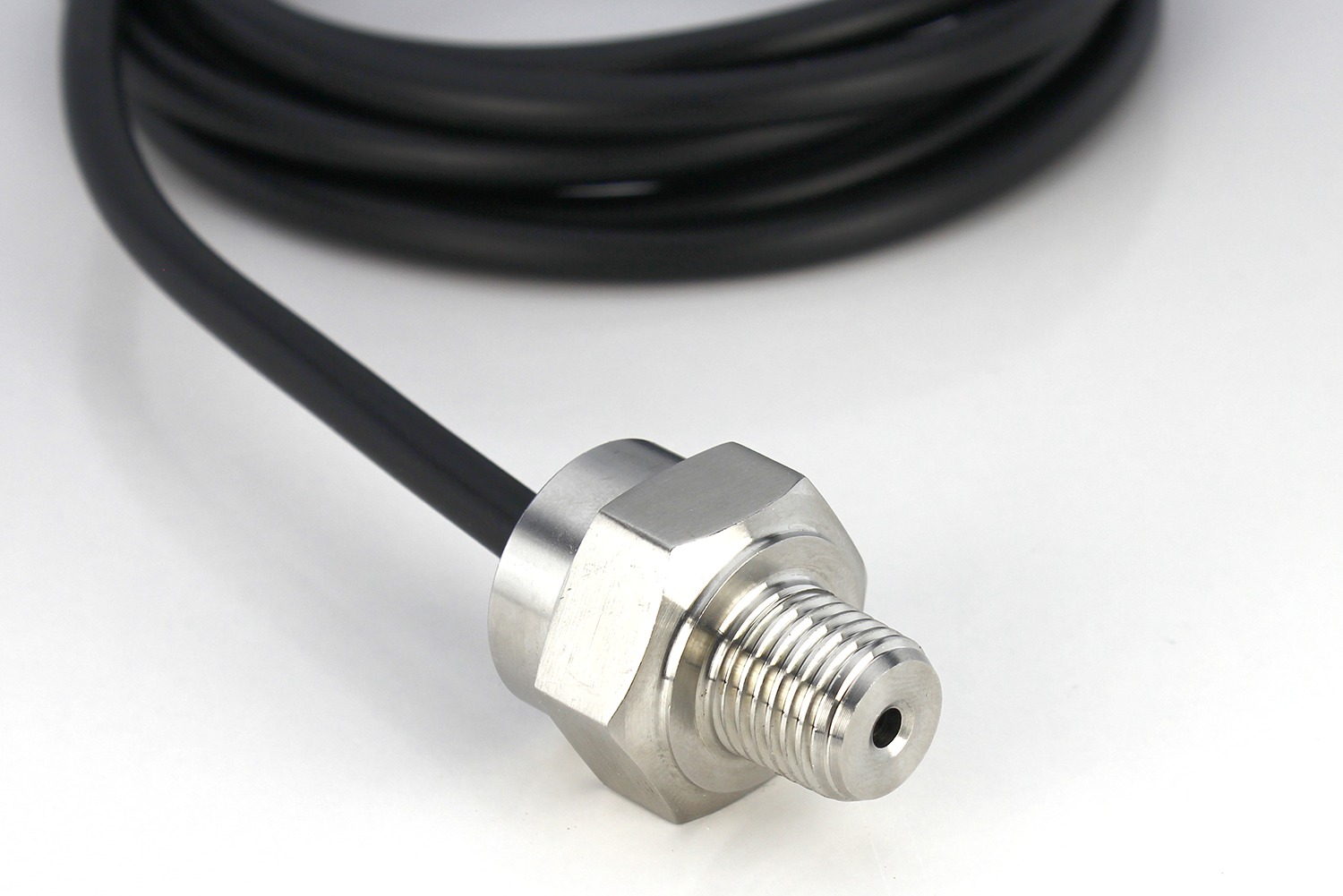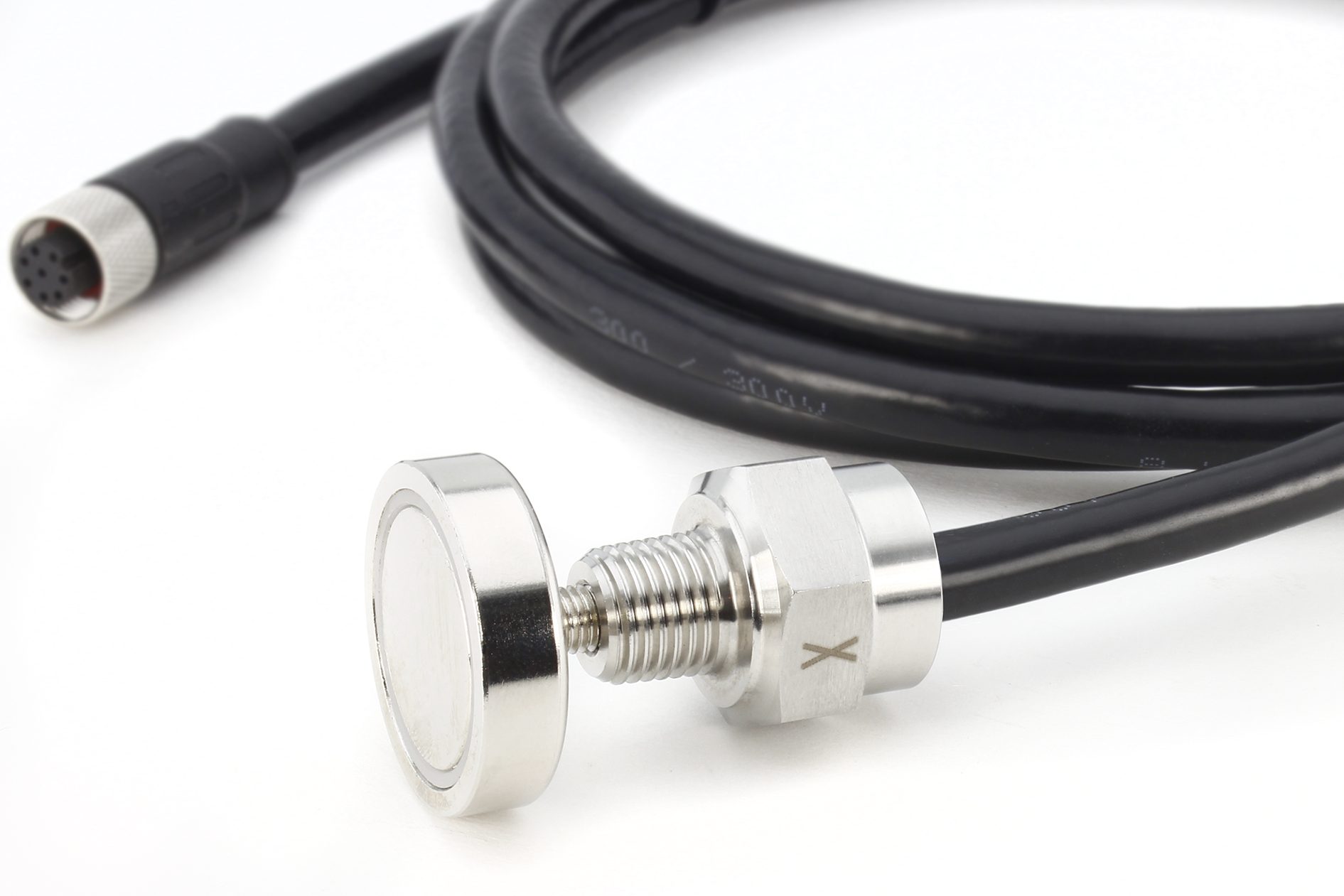Industrial IoT Wireless Predictive Maintenance Sensor V3
Highlights
- Industrial Grade IoT Wireless Predictive Maintenance Sensor
- High Grade K type thermocouple Connector and Probe
- Thermocouple Rating of 260°C (500°F) with ±2.2°C Accuracy
- AC Current Range up to 100A RMS Measurement
- Calculates RMS and MAX g Vibration
- Calculates RMS Velocity Vibration
- Calculates RMS Displacement
- Calculates Peak Vibration Frequency
- Raw Time Domain Data for FFT analysis
- In Built FFT Analysis
- Noise Removal using Low-pass And High Pass Filter
- Frequency Range (Bandwidth) 1.56Hz ~ 6.4kHz
- Vibration Sample Rate up to 25.6kHz
- Encrypted Communication with 2 Mile Wireless Range
- Vibration Probe Operating Temperature Range -40 to +125 °C
- Wall-Mounted or Magnet Mounted IP65 Rated Enclosure
- Vibration Sensor with External Probe Option
- Multiple Probe Mounting Option 1/4 NPT, 1/4-28 UNF, And Magnet Mount
- Up to 500,000 Transmissions from 6 AA Batteries
- Many Gateway and Modem Options Available
Vibration Sensors for Predictive Maintenance
Discover the fascinating world of vibration sensors for predictive maintenance and control. Join us as we delve into the cutting-edge technology that empowers system integrators to optimize performance and prevent downtime.
Industrial IoT Wireless Predictive Maintenance Sensor
The Industrial IoT Wireless Predictive Maintenance Sensor boasts up to a two-mile range using a wireless mesh networking architecture. The Predictive Maintenance Sensors are also known as Condition Based Monitoring Sensors. This IoT Preventative Monitoring Sensor consists of four of our most popular sensors in a single package to help control costs in most predictive maintenance applications. This Sensor include a Vibration Sensor, Thermocouple, 100 Amp AC Split Core Current Sensor, and a Machine Body Temperature Sensor.
How NCD’s Predictive Maintenance Sensors Work
Our IoT Wireless Predictive Maintenance Sensor samples vibration, acceleration, velocity, displacement, frequency, RMS current and temperature data. After data collection, our sensor will send a fixed user-designed transmission interval over your wireless network. This device comes with a 1.25-meter, split core current sensor, a 2-meter vibration probe (which will also measure machine body temperature) and a 1-meter thermocouple probe that makes installation straightforward and simple.
Exclusive NCD Predictive Maintenance Sensors Features
Our 3-Axis Vibration Sensor Characteristics include: Incorporating a 16-bit vibration and temperature sensor. This sensor will transmit highly accurate vibration data at user-defined intervals. These All-In-One Vibration Sensors can send computed and measured data thanks to Inbuild FFT and also RAW data for further processing on the user end. Using a 3-Axis Sensor as opposed to a 1-Axis (such as Piezo Sensors) users will achieve a much more accurate measurement count, and user friendly process.
Our Vibration and Temperature Sensor includes many features such as acceleration calculation, velocity calculation and time domain data analysis for FFT. As well as, user configurable data aggregation interval l ranging from one-second to 10-seconds. This type of sensor can be used in various applications. One, is for aircraft. This sensor can measure the about of “G-Force” during flight to protect the aircraft and passengers alike. This Sensor may also be used in automobiles to detect rapid deceleration, possible collision, and airbag deployment.
Our Industrial IoT Wireless Vibration Sensor samples 2048 samples each Axis and then calculates RMS and maximum vibration readings. This sensor then combines this data with temperature data into a packet and transmits the results to modems and gateways within wireless range. Once the transmission is complete, the vibration sensor goes back to sleep, thus minimizing power consumption. Our Vibration Sensor can be used for a multitude of applications to gather data AND detect early faults from compressors, pumps, motors, conveyors, etc. All at a safe distance from the factory floor.
Our Thermocouple Sensor Characteristics include: Long Range Industrial IoT Wireless Predictive Maintenance Sensor, which is capable of measuring extreme high and low temperatures. This wireless thermocouple includes one 5SRTC-TT-K-24-36 K-Type thermocouple probe from Omega.com with a 1m, 24 AWG connection cable, rated for temperature measurement applications up to 260°C (500°F) with an accuracy of ±2.2°C. This wireless thermocouple device comes with a K-Type connector, which can be used to connect higher temperature range thermocouple if needed. This sensor has a built-in hot and cold junction to provide highly accurate readings. This wireless IoT sensor is an ideal product for high temperature measurements, industrial boiler temperature measurements, liquid temperature measurement, and temperature monitoring of food storage units.
Our AC Current Sensor Characteristics include: Capabilities of measuring AC RMS current. The Long Range Industrial IoT Wireless Predictive Maintenance Sensor comes with a 100 Amp Split Core AC Current Sensor. Our Current Sensor can be applied to supervision of circuits, protection against over-current on machinery, motors, and various power supplies.
This Predictive Maintenance Sensor is powered by just six AA batteries and an operational lifetime of 500,000 wireless transmissions, a 10-year battery life can be expected. (Depending on environmental conditions and the data transmission interval.)
*PLEASE NOTE — RMS is calculated using Parseval’s theorem.
Predictive Maintenance And Condition Monitoring Applications
- Ideal for Wireless Vibration Measurement of Motors, Pumps, Compressors
- Wireless Industrial Vibration of Robotic Equipment, Conveyors, and Transport Vehicles
- Machine Health Monitoring for a Predicative Maintenance System
- Future Fail Detection for Industrial Machines
- Vibration Monitoring of Conduits, Pipes, and Air Passages
- Vibration and Temperature Monitoring for AWS, Azure, MQTT, Google, or your preferred Cloud Service
Read more about Industrial IoT Predictive Maintenance
- Preventive Maintenance of Industrial Conveyor Belt Failure Analysis
- Harnessing The Power of Predictive Maintenance in HVAC Systems
- Vibration Analysis Data in Detail
- Understanding Wireless Vibration Analysis
- Monitoring Pumps Health Using Wireless Vibration Sensors
General Vibration Guidelines
When obtaining the Predictive Maintenance Sensor, there are Vibration guides to observe. Here are some recommended Vibration standards, you can compare these readings with our Long Range IoT Wireless Vibration Temperature Sensor to determine if your device is operating properly or if it may require service (note that actual equipment and application may vary):
A. 0.01g or Less — Excellent condition, No action required
B. 0.35g or less — Good Condition, No action required unless the machine is noisy or running at abnormal temperature
C. 0.5g or less — Fair Condition, No action required unless the machine is noisy or running at abnormal temperature
D. 0.75g or More— Rough Condition, possible action required if machine is noisy and also check the bearing temperature
E. 1g or More — Very Rough Conditions, further analysis and see if its doing this continuously. Also check for noise and temperature
F. 1.5g or More — Danger Level, there is definitely a problem in the machine or installation. Also check the temperature Log
G. 2.5g or More — Shut-down the Machine immediately and look for possible causes. Call a technician for immediate repair
For Heavy Machinery these readings could be 1.5 times to 2 times more than listed above.
Transmission Interval
This Predictive Maintenance Sensor sends data periodically, based on user-preset timing intervals.
Industrial Wireless Vibration Monitor vs Long Range IoT Vibration Monitor
We realize that the Industrial Wireless version and the Long Range IoT version seem very similar and in fact are. The Industrial Wireless line has a few improvements over its counterpart in the Long Range Wireless line in form and fit, but maintain the same function. Industrial Wireless versions may have a longer battery life, optional off-board sensors, more accurate readings, and other frequency ranges. Below is a table based on the Vibration Sensor included in the Predictive Maintenance Sensor:
| Feature | Industrial Wireless | Long Range IoT | Industrial Wireless V3 |
|---|---|---|---|
| 900 MHZ | X | X | X |
| 868 MHz Option | X | X | |
| 2-Mile Range | X | X | X |
| Battery Powered | X | X | X |
| Optional External Power | X | X | X |
| Wireless Mesh Capabilities | X | X | X |
| IP65/Outdoor Rated | X | X | |
| Magnetic Mounting Attachments | X | (Optional) | X |
| External Sensor Probe | (Optional) | X | |
| Acceleration Measurement | X | X | X |
| Velocity Measurement | X | ||
| Displacement Measurement | X | ||
| Time Domain | X | X | |
| FFT | X | ||
| Frequency Measurement | X | ||
| OTA | X | ||
| FIIR Filters | X | ||
| Configurable Frequency Range | X | X | |
| Configureable Sample Duration | X | ||
| 1/4 NPT Housing | X | ||
| 1/4-28 UNF Housing | X |
Mechanical Drawing

Wiring Diagrams
Resolution
- 100 amp CT: 50mA resolution ( Min measured current 1.5% of FS)
- 200 amp CT: 100mA resolution ( Min measured current 1.5% of FS)
- 600 amp CT: 300mA resolution ( Min measured current 1.5% of FS)
- 1000 amp CT: 500mA resolution ( Min measured current 1.5% of FS)
Not for use in outdoor applications or for use in excessive temperature conditions. Prolonged freezing will prevent batteries from functioning until thawed, using extended temperature range industrial batteries may improve the useful temperature range. Extended freezing applications should use a full-time powered solution. Prolonged exposure to extreme humidity conditions may damage this device. The sensing element is rated for use for 5 years and may be replaced. Exposure to high temperatures may cause the batteries to leak, causing permanent damage to this device. NCD Warranty does not cover battery corrosion or use in excessively smoky environments under any circumstances.
900HP-S3B Wireless Compatibility Notes
Notice: Compatibility Notes Does NOT Apply to the Following Products:
- NCD Enterprise Solutions
- NCD Wireless Sensors
- NCD Enterprise Modems and Gateways
Notice: Compatibility Notes Applies to NCD Industrial Products, Including Fusion, ProXR, ProXR Lite, Taralist, and Reactor Series Products.
Compatibility Notes
When using an 900HP-S3B communication module, it is essential that you use the ZIGMO_PCB to configure the module settings. Long-Range wireless sensors may be programmed over the air without removing the communications module.
A 900HP-S3B Modem or a gateway of some kind that support the 900HP-S3B communications module will also be required.






